Karen Azarnia culls memory, time, and family occasions to produce felicific paintings that are informed, in part, by art history and immediate personal experiences. Recently, the COMP Magazine made a visit to Azarnia’s studio at Mana Contemporary to discuss her ongoing curatorial and painting practice, how she balances family and professional life, the role of how quotidian activities and sequencing images can be read in her paintings, and her recent curatorial and exhibition efforts.
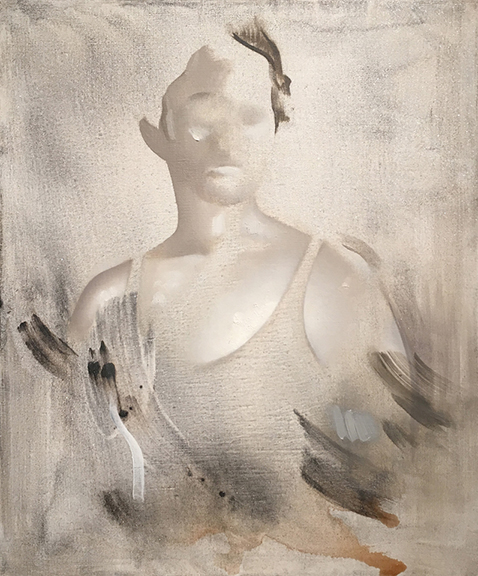
You are quite busy raising a family, holding an active studio practice, teaching at SAIC, and working on curatorial projects. You studied out east at the Rhode Island School of Design and Brown University, then landed in Chicago. Can we begin with you identifying any early experiences or people who set you on your aesthetic investigations?
While I had many interests when I was younger, one experience that stands out was a portfolio-building class I took at SAIC the summer of my junior year in high school. We spent a great deal of time in the museum, and I was enamored with the entire experience. Little did I know things would come full circle, that I would end up earning my MFA and ultimately teaching in the Painting and Drawing department. I have a fairly traditional artistic background, and early on looked at Caravaggio, Degas, and Manet among others. I have always loved Japanese prints. More recently the haunting portraits of 19th century painter Eugène Carrière and abstract paintings of Helen Frankenthaler have been important influences on my work. Carrière depicts portraits of family and friends, often at home in domestic settings. He reduces and simplifies the backgrounds, so the figures materialize out of dark, atmospheric space. I love Frankenthaler for her use of color and fluid pours of paint. They are bold yet soft at the same time.
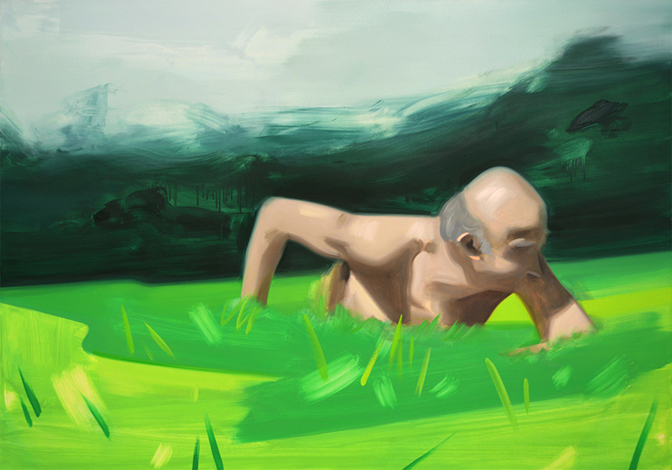
The painting, Field, 2018, initially stands out from our conversation. This is a painting of your father who is immersed in a field. Can you discuss the motivation for producing this work? How did your father respond to the piece?
I’ve had the idea for this painting for some time. When I was invited to take part in the exhibition Women Painting Men at the Riverside Art Center, I immediately knew this was what I wanted to include. While most of the figures I usually depict are characters, this is a portrait of my father. Painted when my daughter was just a few months old, it is anti-heroic. Pushing against typical depictions of the male figure, it embodies the complexities of our relationship now that I am a parent and both my parents are aging. An earlier version of this piece exists. But the scale was all wrong and stylistically at the time I wasn’t sure how to resolve it. This version is inspired by the recent Alex Katz show Grass and Treesat Richard Gray Gallery. It also speaks to Andrew Wyeth’s Christina’s World. The scale of the figure in relationship to the landscape is essential. The figure is life-sized, engulfed by the surrounding landscape to heighten the sense of vulnerability. I’m close to both my parents, in fact my father helped babysit so I could finish this painting for the show. He understands and supports what I’m trying to say and achieve.
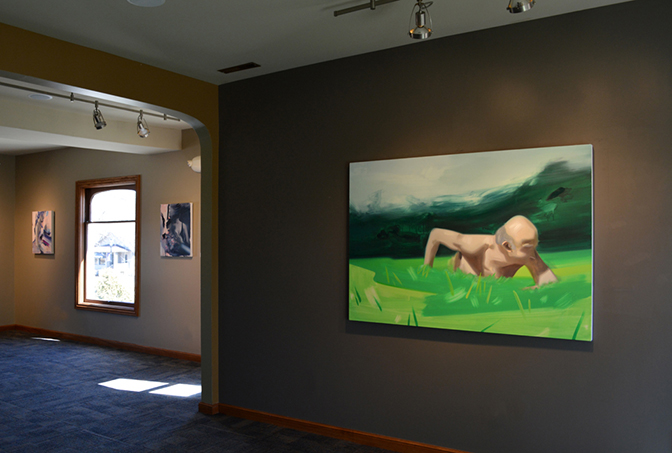
Olivet Nazarene University, 2019
Can you discuss the production and relationship of the three paintings from That Drive, produced in 2017-18? Aside from subtle differences, these works appear essentially formally the same in appearance. I see these works as investigations of memory and exploring the ephemerality of time. Can you elaborate on this reading?
This read is spot on. The paintings comprise a triptych, and were made together to produce a sequential narrative. They are cinematic, showing the gradual process of a handprint fading away. It speaks to the passing of time and memory, themes that have always been crucial to my work. I’ve been painting an ongoing series of people’s hands for a long time. I love the body language, the way subtle gestures of hands speak volumes through a universal sense of touch. For these paintings, I was trying to think of ways to suggest the human body without actually depicting it. The handprint on the windshield is a trace of the body. Formally, I challenged myself to see if I could paint an almost identical image in each of the three paintings, with subtle variations discernable through slow and careful looking.
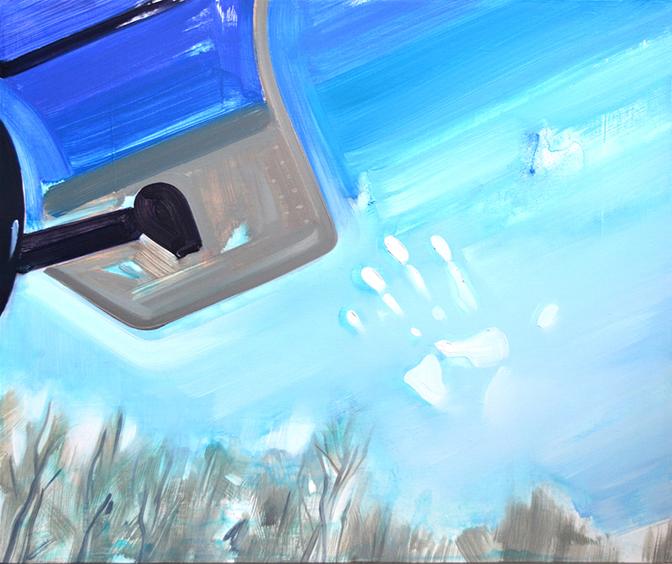
You appear to fairly adept at multitasking. As previously noted, you hold a healthy curatorial and studio practice while raising a family. Can you walk us through your working practice as an artist and curator? How do you find focus in these pursuits while juggling day-to-day family obligations?
I am hugely indebted to other artist parents that have carved out space and modeled a path including Michelle Grabner and Kim Piotrowski. It’s not always easy, and I try to make the most of my resources. I’m fortunate to have a partner who respects my practice and takes on equal responsibility for care-giving. Not a minute goes unaccounted for. It helps to have a sense of humor and be flexible. While it is often challenging, I find raising a family, making my work, teaching, and curating hugely rewarding. Ultimately, this is what keeps me focused.
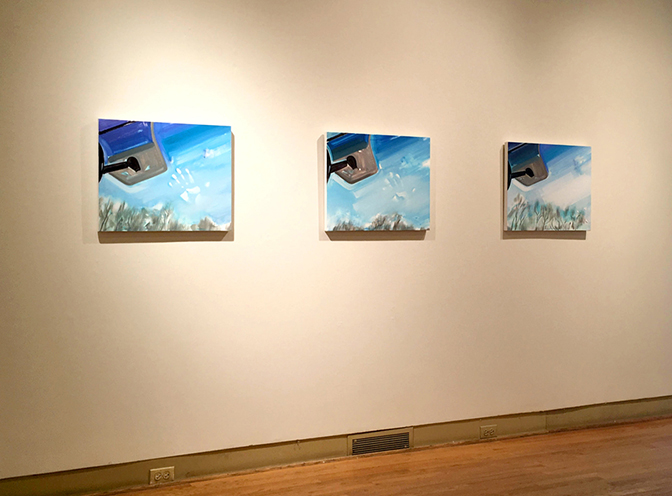
Ukrainian Institute of Modern Art, 2018
What do you value most in your curatorial and studio practice?
I value the idea of taking up space, of inserting my voice in the cultural dialog as both a woman and a mother. I am committed to world-making, the idea that crafting a world, or presenting the world of another artist, is an opportunity to speak to our common humanity and shared experiences.
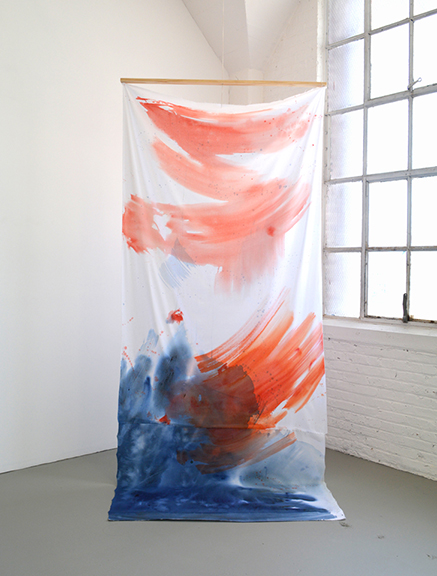
110″ x 50″, 2017
2019 does not seem to be missing a beat. You recently curated an exhibition of Michelle Wasson’s painting for Dominican University. And, you are exhibiting works at Olivet Nazarene University. Can you tell us about these exhibitions? Also, what else is in the works?
It was an incredible pleasure to work with artist Michelle Wasson. We have known each other and exchanged studio visits for some time, and her current Earth and Skyseries is tremendous. I was thrilled she agreed to exhibit a selection of paintings at the DU O’Connor Gallery. It’s my first curatorial project there since taking on the role of Director this past fall.
I just wrapped up a solo exhibition Fragments at Olivet Nazarene University’s Victorian House Gallery. It’s a lovely space, and the context was appropriate as my work both embraces and pushes against art historical tradition. The show explored themes of time, memory, and place, as lately I’ve been thinking about Gaston Bachelard’s Poetics of Space. Right now I’m preparing for a solo exhibition this coming fall at Governors State University’s Visual Arts Gallery. Titled Full Circle, it will be my largest solo exhibition to date. Influenced by home and family, it will focus on the intersection of time, memory, nature and life cycles.
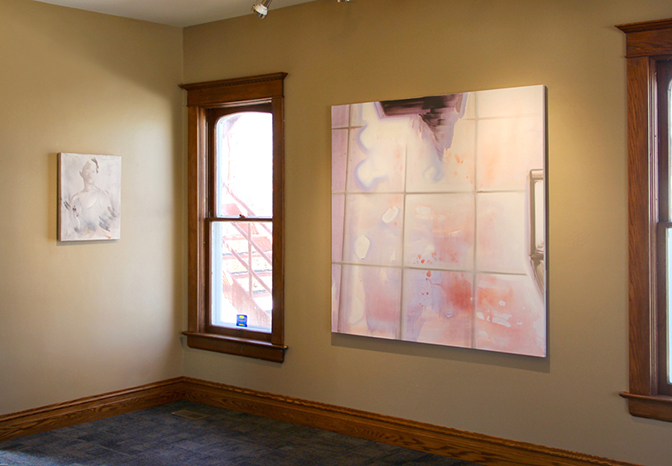
Olivet Nazarene University, 2019
For additional information on the artistic and curatorial practice of Karen Azarnia, please visit:
Karen Azarnia: http://www.karenazarnia.com/
Chicago Tribune Article, Women Painting Men: https://www.chicagotribune.com/entertainment/museums/ct-ott-0525-see-it-now-20180521-story.html
Fragments, Olivet Nazarene University: www.olivet.edu/events/karen-azarnia-exhibit-victorian-house-gallery
Michelle Wasson, Making Rain: https://img-cache.oppcdn.com/fixed/13095/assets/jGaXKUGnHsG3b3cT.pdf
Upcoming – Full Circle,Visual Arts Gallery Governors State University: http://www.govst.edu/Gallery/
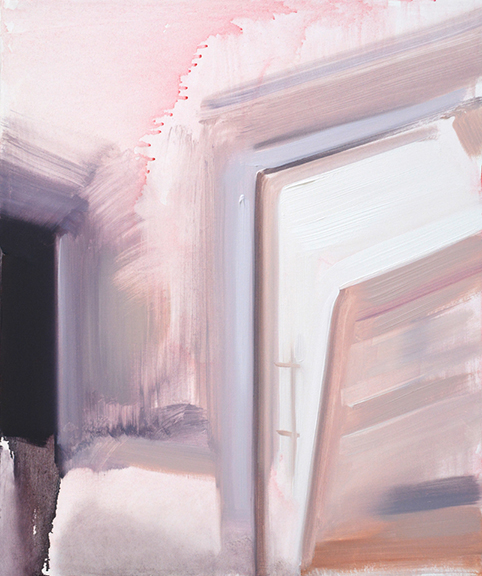
24″ x 20″, 2017
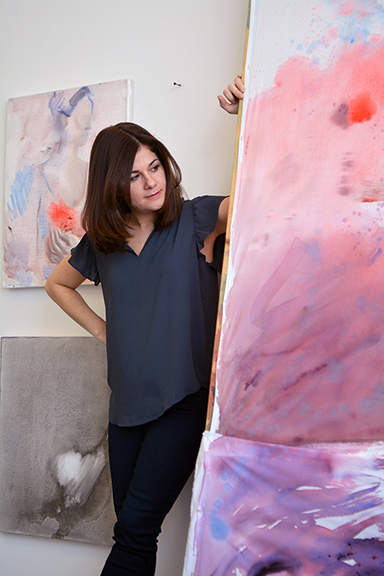
Artist interview and portrait by Chester Alamo-Costello


